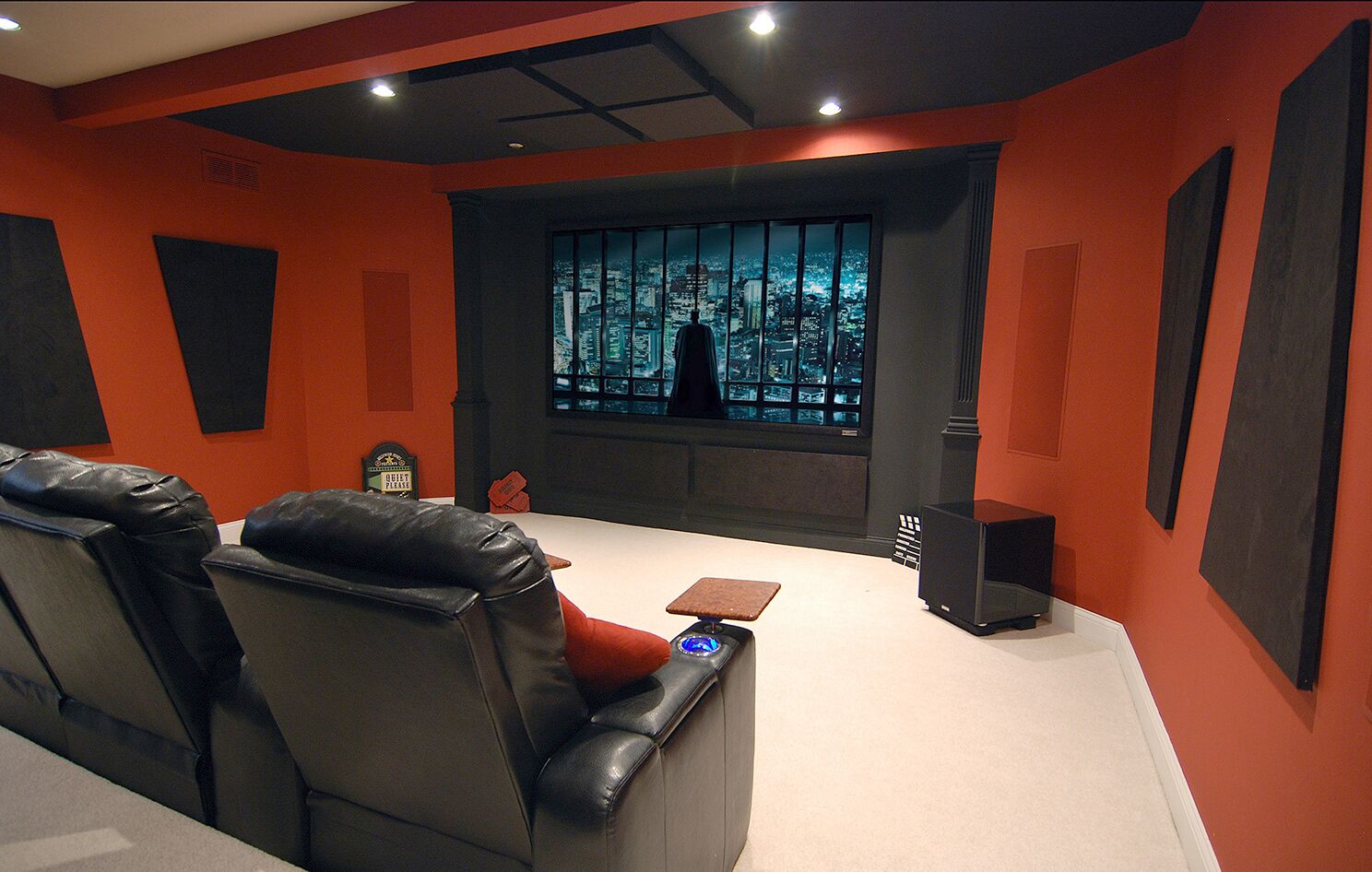Home Theater

Building a home theater can be a complicated process, but with a little research and planning, you can soon have the room you’ve always wanted.
One aspect of home theater construction that is often overlooked is the room itself. The size, shape, and materials of your space are an important part of getting your theater to sound its best. You can tune your system all day, but in order to unlock its true potential, proper acoustic treatment is essential. Even if your room is less than ideal; using a combination of Absorption, Bass Traps, and Diffusion can help control and tremendously improve the sound of the room.
Planning Stage
When you have a reached the stage when you are ready to plan your theater, begin by asking yourself some basic questions: What kind of theater do you want to build? Is it a dedicated room that is only used as a theater? Is this a multi-use family room? Is it somewhere in between? Think about the seating; if you plan several rows, a riser may be necessary. If you choose to incorporate a riser, this diagram shows the materials needed to build one that not only raises up seating, but will also help improve the room acoustically. These answers may impact what kind of treatment you decide to use.
Other things to keep in mind are; the number of speakers and sub woofers, choosing between a TV or projection screen, and what the desired aesthetic of the finished room should be. These are all decisions to personalize your space and finally have the room you’ve always wanted.
Time for Treatment
The first step is to properly bass trap all available corners of the room. If there are doors or other obstructions in corners, installing wall-mounted or horizontal bass trapping is also an option. The amount of bass trapping you need can vary on your sound system, especially if it includes multiple sub woofers. However it’s important to keep in mind that it’s difficult to “overdo” bass treatment.
Next, you will want to treat your back wall with heavier absorption (or even wall mounted bass trapping) towards the center, behind the seating with some diffusion closer to the corners or above the row of absorption (if the room is tall enough).
After this, you can move on to treating the side walls. The side walls of a home theater should alternate rows of absorption and diffusion as you move to the back of the room. These rows should start before the seating begins and continue to the back of the room. The two side walls should be basically symmetrical, however some different diffusion can be used on each side to help spread things more evenly.
The last step is the ceiling. If you are dealing with Dolby Atmos® or other ceiling mounted speakers, you may want to skip this to begin with because you don’t want to interfere with those speakers. If you don’t have anything up there, you can install a cloud above your seating or use something like a Sustain Lens to direct sound into the absorption above. (This works best in rooms with taller ceilings than the average 8’)
Some other things to consider:
- If the ceiling isn’t flat (if there’s a peak or slant) you may want to more heavily absorb the ceiling since it is introducing more places for reflections to congregate.
- Home Theaters are quite subjective in what you want to hear, so while there are some rules of best practice, some tweaking for personal taste is to be expected.
- Speaker placement is going to be determined by the manufacturer so be sure to check that out to see how they recommend installing your sound system.
- Projector based home theaters make ceiling treatment more difficult, so try to keep that in mind when deciding your ceiling treatments.
Ready For More Information? We Can Help!
Want to know more about your options? Auralex is the industry-leading Acoustics company and one of the oldest and most respected companies in the business. Since 1977, we have helped thousands of people with their unique acoustic needs in all kinds of facilities from auditoriums to bedroom studios. Our highly trained staff is available for phone support to answer questions. If you have some basic measurements and information about your space try our RLX Room Layout eXpress App!
Contact us today to see what we can do for you!

